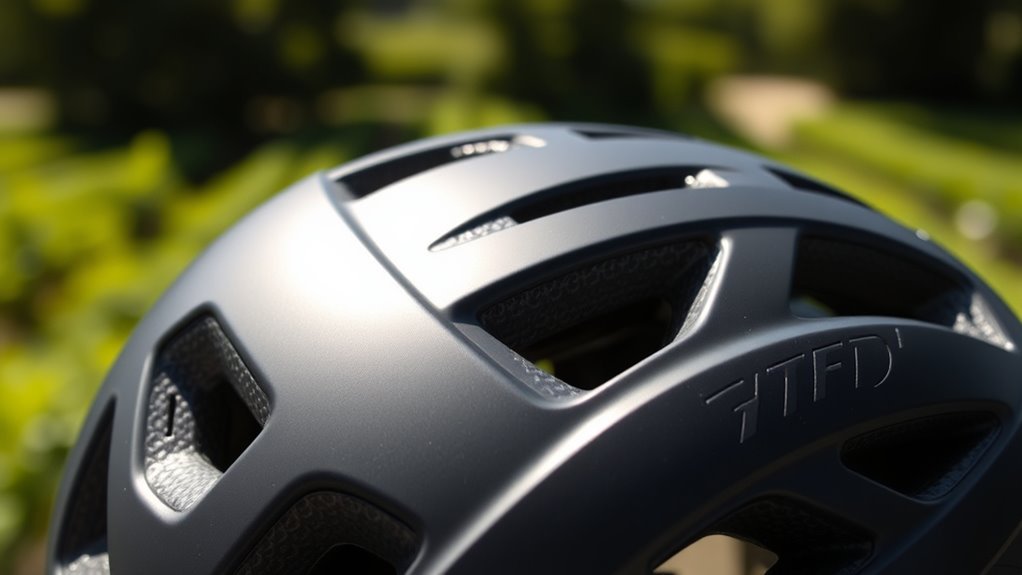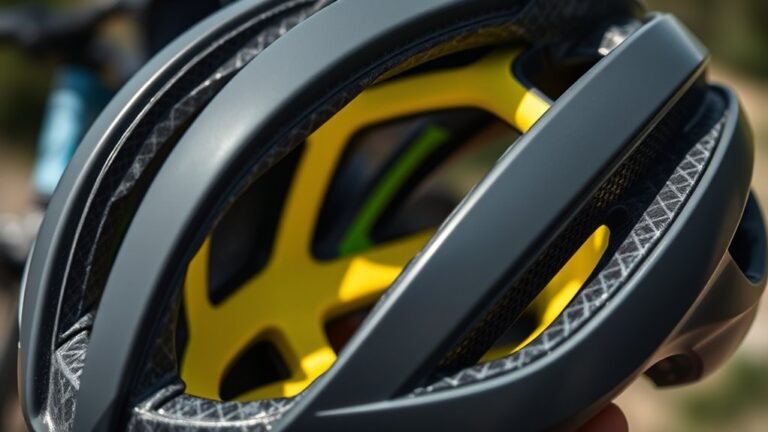Bicycle Helmet Ventilation – Why It Matters
Bicycle helmet ventilation is essential for your riding comfort and performance. Good airflow helps manage sweat and keeps you cool, reducing discomfort and fatigue. Effective heat dissipation maintains focus, allowing for longer, more enjoyable rides. Look for helmets with strategically designed airflow channels and adjustable vents for a customized fit. A snug, lightweight helmet enhances protection without sacrificing comfort. Want to know more about choosing the best ventilated helmet for your needs?
The Importance of Helmet Ventilation
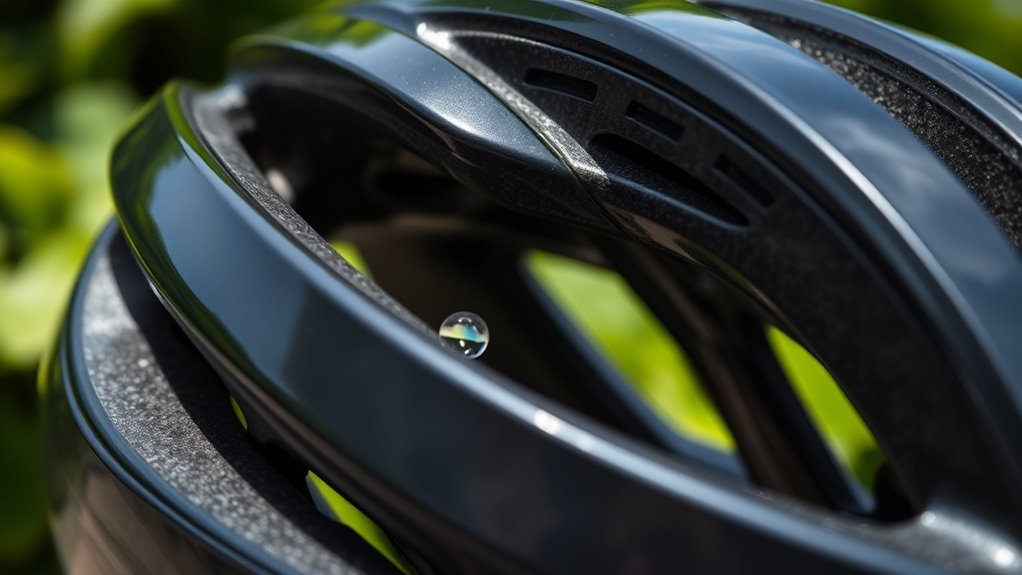
When you ride a bicycle, the right helmet isn’t just about safety; it also needs to keep you comfortable. Helmet ventilation is vital because it directly impacts your overall experience. The choice of helmet materials plays a significant role in this aspect. Lightweight, breathable materials can enhance airflow dynamics, allowing heat and moisture to escape efficiently. This prevents excessive sweating and discomfort during longer rides. A well-ventilated helmet promotes a cooler environment, which can help you maintain focus and stamina. By understanding how different materials and designs influence ventilation, you can choose a helmet that not only protects you but also supports your desire for freedom on the road. Prioritizing ventilation guarantees you enjoy every ride to its fullest.
How Ventilation Affects Comfort
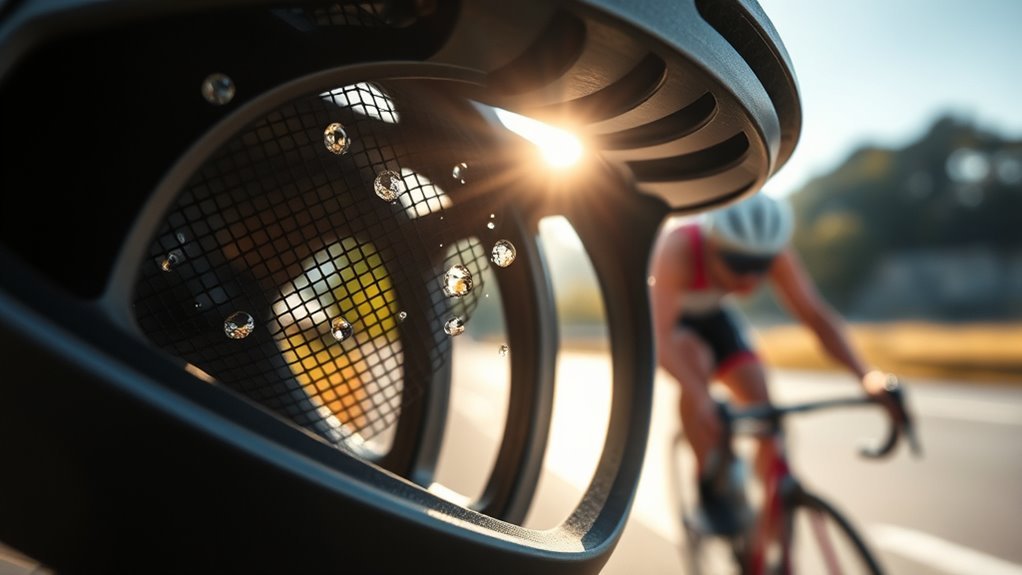
Although you might focus primarily on safety when choosing a bicycle helmet, ventilation plays a crucial role in enhancing your overall comfort during rides. Effective ventilation directly impacts sweat management, allowing moisture to escape and helping you stay dry. When your helmet provides adequate airflow, you’ll notice a significant boost in ride enjoyment, especially during warmer conditions. A well-ventilated helmet minimizes the stuffiness that can lead to discomfort, letting you focus on the freedom of the ride rather than the heat. Selecting a helmet with good ventilation guarantees that you can maintain your energy and enthusiasm, enhancing your cycling experience. Ultimately, prioritizing ventilation alongside safety means you can enjoy longer rides without feeling bogged down by sweat and heat.
The Relationship Between Temperature Regulation and Performance
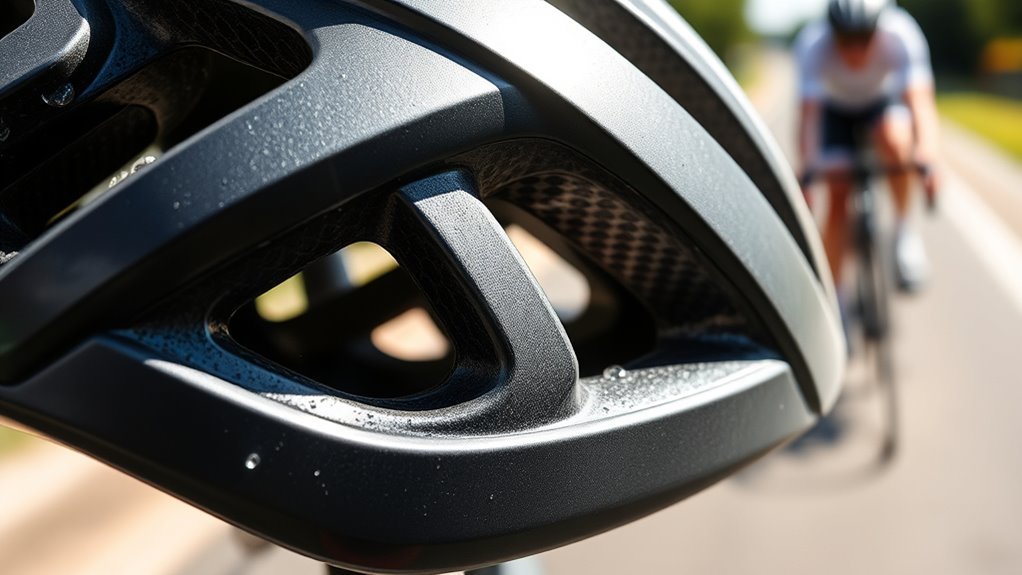
Understanding how temperature regulation impacts your performance is essential for any cyclist. Effective heat dissipation not only enhances comfort but also helps maintain your focus during rides. When you’re cool and collected, you’re more likely to perform at your best.
Heat Dissipation Importance
Effective heat dissipation is essential for maintaining ideal performance during cycling, as elevated body temperatures can lead to fatigue and decreased focus. When you’re riding, heat buildup occurs rapidly, especially on warm days or during intense efforts. Your body relies on various cooling mechanisms to regulate temperature, such as sweating and increased blood flow. However, when these mechanisms are overwhelmed, performance suffers. A well-ventilated helmet plays a vital role in enhancing heat dissipation, allowing for better airflow around your head. By improving ventilation, you can help mitigate heat buildup, keeping your core temperature in check and extending your endurance. Ultimately, optimal heat management not only boosts your physical performance but also contributes to a more enjoyable ride, giving you the freedom to explore.
Comfort and Focus
When the temperature rises during a ride, your comfort and focus can quickly diminish, impacting overall performance. Effective ventilation in your helmet plays an important role in maintaining temperature regulation, which directly influences ride efficiency. When you’re overheated, your mental clarity can suffer, leading to decreased concentration and slower reaction times. By ensuring your helmet allows for proper airflow, you can keep your head cool, enhancing your ability to stay alert and engaged with the road ahead. This connection between comfort and performance is essential for those seeking the freedom to ride at their best. So, prioritize helmets with excellent ventilation to maintain that crucial balance, allowing you to enjoy the ride while maximizing both comfort and focus.
Ventilation Design: Key Features to Look For
When selecting a bicycle helmet, the design of airflow channels plays an essential role in ensuring effective ventilation. You should also consider adjustable ventilation openings, as they allow you to customize airflow based on your riding conditions. These features can greatly enhance comfort and temperature regulation during your rides.
Airflow Channels Design
While the aesthetic appeal of a bicycle helmet is important, the design of airflow channels plays a crucial role in ensuring ideal ventilation. You need to focus on airflow optimization, as it determines how effectively air moves through the helmet. Look for helmets with strategically placed channels that maximize channel efficiency. These channels should create a seamless airflow pattern that draws in cool air while pushing out warm air, keeping your head comfortable during rides. The design should also consider the helmet’s shape and material, which can influence airflow dynamics. By choosing a helmet with well-engineered airflow channels, you’ll enhance your riding experience, allowing you to enjoy the freedom of the ride without overheating or discomfort.
Adjustable Ventilation Openings
Adjustable ventilation openings can greatly enhance your comfort during rides, as they allow you to customize airflow based on changing conditions. With an adjustable design, you gain control over your helmet’s ventilation mechanisms, ensuring a more enjoyable ride. Here’s why it matters:
- Stay cool on hot days
- Prevent sweat build-up during intense rides
- Adapt to variable weather conditions
- Enhance your focus and performance
- Experience a more personalized fit
Understanding Airflow and Safety
Understanding the dynamics of airflow in bicycle helmets is essential not only for comfort but also for safety. Proper airflow dynamics help regulate temperature, reduce sweat buildup, and maintain focus during rides. When selecting a helmet, it’s important to evaluate how well it meets safety standards. Airflow can directly impact your helmet’s ability to dissipate energy during an impact, providing better protection in case of a fall. A well-ventilated helmet can also enhance your awareness of surroundings, promoting safer riding experiences. By understanding these factors, you empower yourself to make informed choices that prioritize both comfort and safety. Ultimately, a balance of effective airflow and adherence to safety standards is critical for enjoying the freedom of cycling.
Tips for Choosing the Right Ventilated Helmet
When it comes to selecting a ventilated helmet, several factors can enhance your riding experience while ensuring safety. To make the right choice, consider the following:
- Helmet fit: A snug fit keeps your helmet in place, optimizing protection.
- Material choice: Lightweight materials improve comfort without sacrificing safety.
- Ventilation design: Larger vents allow for better airflow, reducing heat buildup.
- Weight: A lighter helmet enhances your freedom on the road, making long rides more enjoyable.
- Adjustability: Look for features like adjustable straps or inner padding for a customized fit.
Frequently Asked Questions
Can Helmet Ventilation Help Prevent Heat-Related Illnesses?
Yes, helmet ventilation can help prevent heat-related illnesses by enhancing heat regulation. When you ride, proper airflow allows your body to cool down efficiently, reducing the risk of overheating. This safety benefit is essential, especially during long rides or in hot weather. By choosing a well-ventilated helmet, you can maintain comfort and focus on your freedom to ride, all while ensuring you stay safe and healthy on your journeys.
How Does Helmet Ventilation Impact Long-Distance Cycling?
Helmet ventilation can greatly enhance your long-distance cycling experience. Think of it as a refreshing change that keeps you cool and focused. With improved aerodynamic efficiency, you’ll glide through the miles more effortlessly. Effective sweat management prevents discomfort, allowing you to maintain your performance and freedom on the road. When you’re not battling heat, you can truly enjoy the ride, pushing your limits without the distraction of overheating.
Are There Specific Standards for Helmet Ventilation?
Yes, there are specific standards for helmet ventilation, which focus on ventilation efficiency and safety standards. Organizations like CPSC and EN 1078 set guidelines guaranteeing helmets provide adequate airflow while maintaining structural integrity. These standards help guarantee that ventilation doesn’t compromise safety, allowing you to enjoy your ride without overheating. It’s essential to choose a helmet that meets these requirements, balancing comfort and protection for your long-distance cycling adventures.
Do Different Cycling Disciplines Require Different Ventilation Styles?
Yes, different cycling disciplines do require different ventilation styles. For mountain biking, you’ll want a helmet with ample ventilation to keep cool during technical rides and climbs. These helmets often prioritize airflow and durability. In contrast, road racing helmets typically feature streamlined designs with fewer vents, reducing aerodynamic drag while still allowing for some airflow. Each design caters to the specific needs of the discipline, ensuring you stay comfortable and focused on your ride.
How Often Should I Clean My Helmet’s Ventilation System?
Your helmet’s ventilation system deserves regular attention. Just like a garden needs weeding to flourish, cleaning frequency should be every few rides or at least monthly. Dust and debris can block airflow, hampering ventilation maintenance. By keeping it clean, you guarantee a cool ride, allowing you to embrace the freedom of the open road. So, take a moment to inspect and clean those vents; your head will thank you on every adventure.
